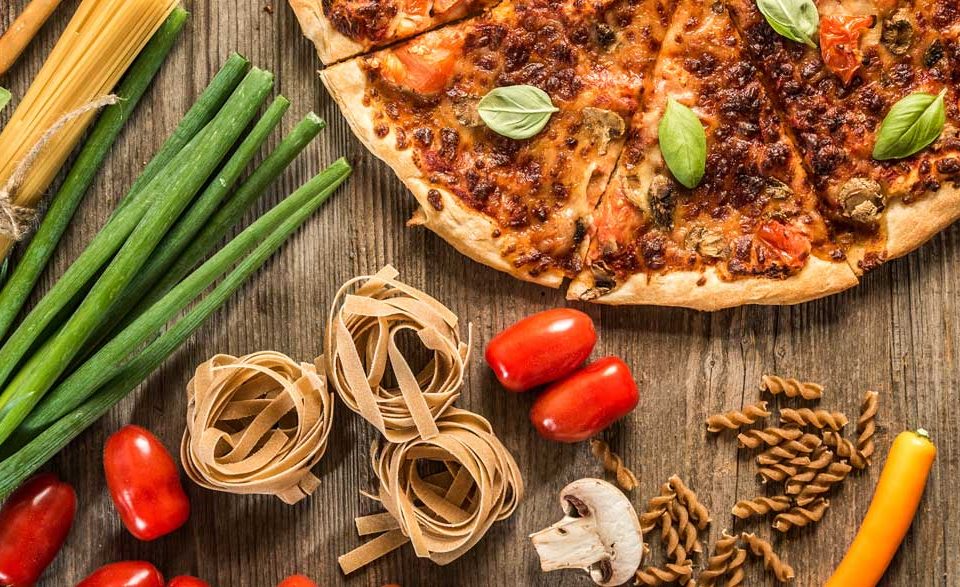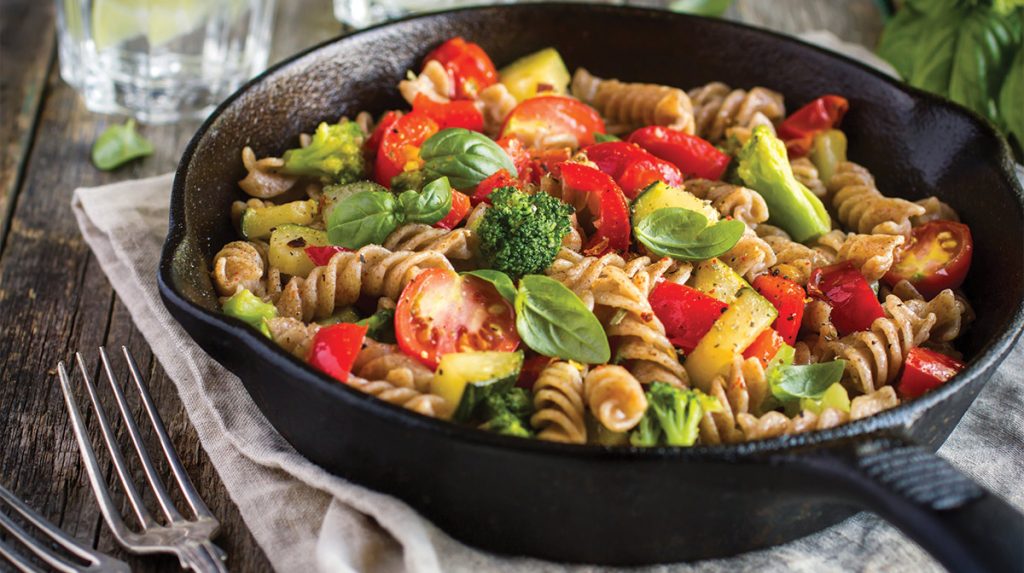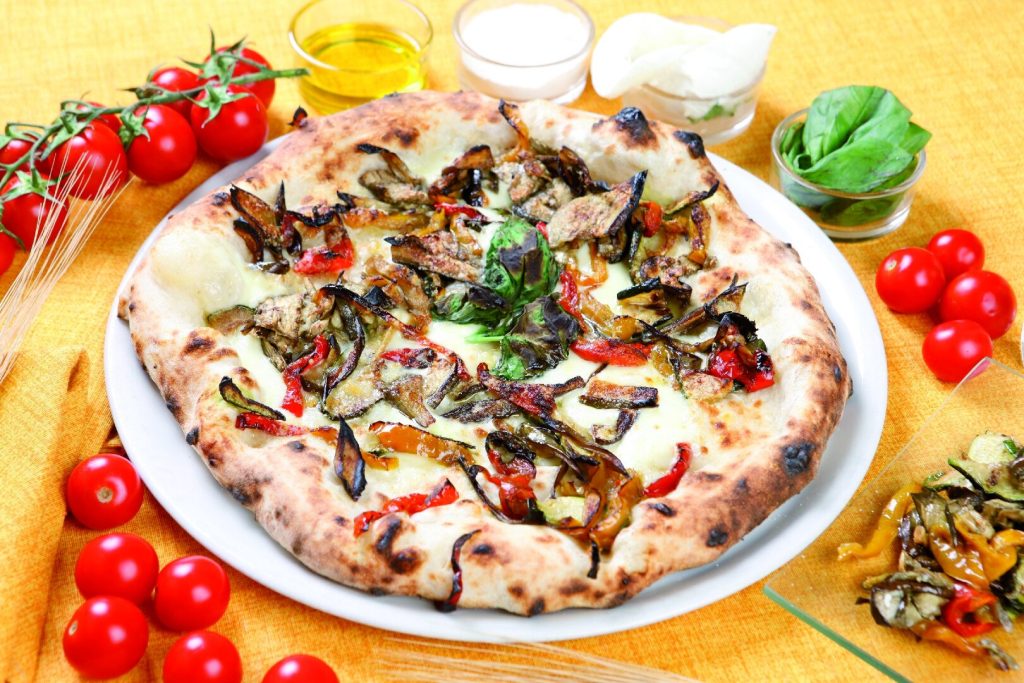The ultimate guide to using vegetables in Italian pasta and pizza
Have you ever tasted pasta all’ortolana made with fresh seasonal vegetables, or a pizza where every ingredient tells its own story? Behind Italy’s most iconic dishes lies a colorful world of flavors, aromas, and traditions worth exploring!
Italian cuisine is a true philosophy of life, where vegetables never play a secondary role. Instead, they’re absolute protagonists, transforming simple dishes of pasta or pizza into unforgettable culinary experiences. Ready to explore this fascinating universe of flavors with us and learn how to cook vegetables for pasta and pizza?
Why vegetables are essential in Italian cuisine
Imagine strolling through the alleys of a quaint village in Cilento, where generations of farmers have turned necessity into virtue. With limited access to animal proteins, vegetables naturally became the centerpiece of Italian cooking, creating a gastronomic heritage that we rediscover today with excitement.
This perfect balance is equally evident in pasta and pizza dishes, where vegetables define the character, personality, and value of each bite. Curious to experience this magic yourself? Discover our Farmers’ Market Shopping with Roman Full Course Class, where you’ll learn to select the best seasonal vegetables directly from Rome’s vibrant markets!
How vegetables enhance flavor, texture, and nutrition in pasta and pizza
There’s a reason Italian dishes are celebrated worldwide: the irresistible harmony of flavors and textures that only vegetables can create. In traditional pasta all’ortolana, the marriage of different vegetables creates a sauce so rich and delicious you won’t even miss the meat.
Crunchy bell peppers meeting tender eggplant, balanced by the natural sweetness of cherry tomatoes… isn’t this the real magic of cooking?
But vegetables aren’t just about flavor! Nutritionally, they enrich pasta and pizza with essential fiber, vitamins, and minerals, slowing down carbohydrate absorption and making dishes both balanced and satisfying.
Traditional vs. modern uses of vegetables in Italian dishes
Traditional Italian vegetable recipes have stood the test of time. Traditionally, grandmothers carefully selected seasonal vegetables from their gardens, preparing them simply but effectively to enhance their natural flavors. Classic Italian vegetable dishes showcase this approach. Think pasta with tomatoes, onions, and pecorino cheese – few ingredients encapsulating the essence of Mediterranean simplicity.
Today, while deeply respecting tradition, Italian chefs are exploring new frontiers. Ever tried black kale cream on fresh tagliolini or crispy purple carrot chips topping white ragù pasta? These innovative Italian vegetable pairings show how. Modern experimentation offers surprising taste experiences, rooted in the Italian philosophy of respecting ingredients.
Want to balance tradition and innovation like a true Italian chef? Our Cook an Italian Sunday Lunch with Farmers’ Market Shopping course will guide you through both worlds, unveiling secrets of classic recipes while encouraging confident experimentation.
Best vegetables for classic Italian pasta dishes
Tomatoes
Is there anything more iconic in Italian cooking than tomatoes? This “red gold” (technically a fruit!) is the beating heart of countless recipes. For a simple yet extraordinary sauce, toss diced fresh tomatoes with salt, basil, and garlic to intensify their flavors, perfect for your favorite pasta.
Garlic & Onion
Step into an Italian kitchen, and the unmistakable aroma of garlic and onion sizzling in olive oil will welcome you warmly. These two magical ingredients form the aromatic foundation that elevates any simple dish into a sensory experience.
Red Tropea onions from Calabria offer sweet contrast when thinly sliced and sautéed over high heat. Garlic can be the star or a subtle background note: whole cloves “in camicia” (skin-on) for delicate aroma or finely chopped for a bolder taste.
Spinach & Swiss Chard
These vibrant leafy greens are incredibly versatile! The pairing of spinach and ricotta in ravioli or cannelloni is among Italy’s most beloved traditional combinations. Did you know spinach is also used to naturally color fresh pasta? Emilia’s famous green lasagna owes its emerald hue to spinach, highlighting the Italian blend of beauty and goodness.
Zucchini
Light, versatile, and flavorful, zucchini celebrate Italian summer. In the renowned pasta alla Nerano, fried zucchini blend with cheese to create a creamy sauce that delights with every forkful. Pair them with shrimp for a wonderful sea-and-garden symphony showcasing Mediterranean richness.
Best vegetables pizzas
The best vegetable toppings for pizza combine texture, flavor, and tradition. Discovering the best vegetables for pasta and pizza starts with understanding quality ingredients. Want to learn to craft authentic Roman pizza yourself? Our Pizza & Roman Antipasti course reveals secrets for perfect dough and traditional toppings!
Eggplant
Eggplant’s unique texture absorbs flavors beautifully, traditionally fried or grilled, delivering a rich, velvety taste. Pizza alla Norma, inspired by Sicily’s famed pasta dish, blends fried eggplant, tomato sauce, fresh basil, and salty ricotta—a bite-sized Mediterranean history.
Mushrooms
The woodland aroma of mushrooms on pizza adds earthy warmth, pairing beautifully with tomato acidity and creamy mozzarella. Sauté mushrooms beforehand to remove excess water and enhance flavor – a professional tip that makes all the difference!
Artichokes
Artichokes are culinary gems. On Pizza Capricciosa, alongside olives, mushrooms, and ham, they add elegance. Pre-cooked and sliced, their refined earthy taste elevates a simple pizza into a gourmet experience.
Bell Peppers
Their sweet, lightly smoky flavor contrasts wonderfully with salty toppings like anchovies or tuna. A quick tip: roast and peel peppers before use, concentrating their natural sweetness.
Note for Americans: In Italy, “peperoni” refers to bell peppers, while in America, “pepperoni pizza” means spicy salami pizza. Be mindful of this delicious linguistic twist.
Pepperoni (Hot Chili)
Small yet powerful, chili peppers infuse dishes with heat. Fresh, dried, or in oil, they’re the fiery heart of Pizza Diavola, perfectly enhancing tomato and mozzarella. Remember, chili should enhance, not overwhelm the flavors!
Zucchini
Grilled, julienned, sautéed, or creamed, zucchini offer endless pizza possibilities. Pizza with zucchini and blossoms celebrates spring’s delicate sweetness, captivating even the most refined palates.
Olives
Black or green olives add savory depth, enriching classic pizzas like Capricciosa or Quattro Stagioni. Tip: pit olives for uninterrupted enjoyment!
Potatoes
Surprised to see potatoes on pizza? Loved especially in Northern Italy, thin slices seasoned with fresh rosemary create incredible texture contrasts – crispy edges and tender centers.
Experimenting with textures and cooking methods
Ready to elevate your cooking skills? Learning how to cook vegetables for pasta and pizza requires understanding technique. Quickly sauté vegetables for vivid color and crunch, or slow-cook them for deep flavors and silky textures. Pre-cooking firm vegetables for pizza prevents sogginess, ensuring perfection!
Want secrets straight from an Italian grandma? Our Cooking With Nonna course transports you to Italy’s culinary heart, teaching generations-old techniques that will forever transform your cooking.






